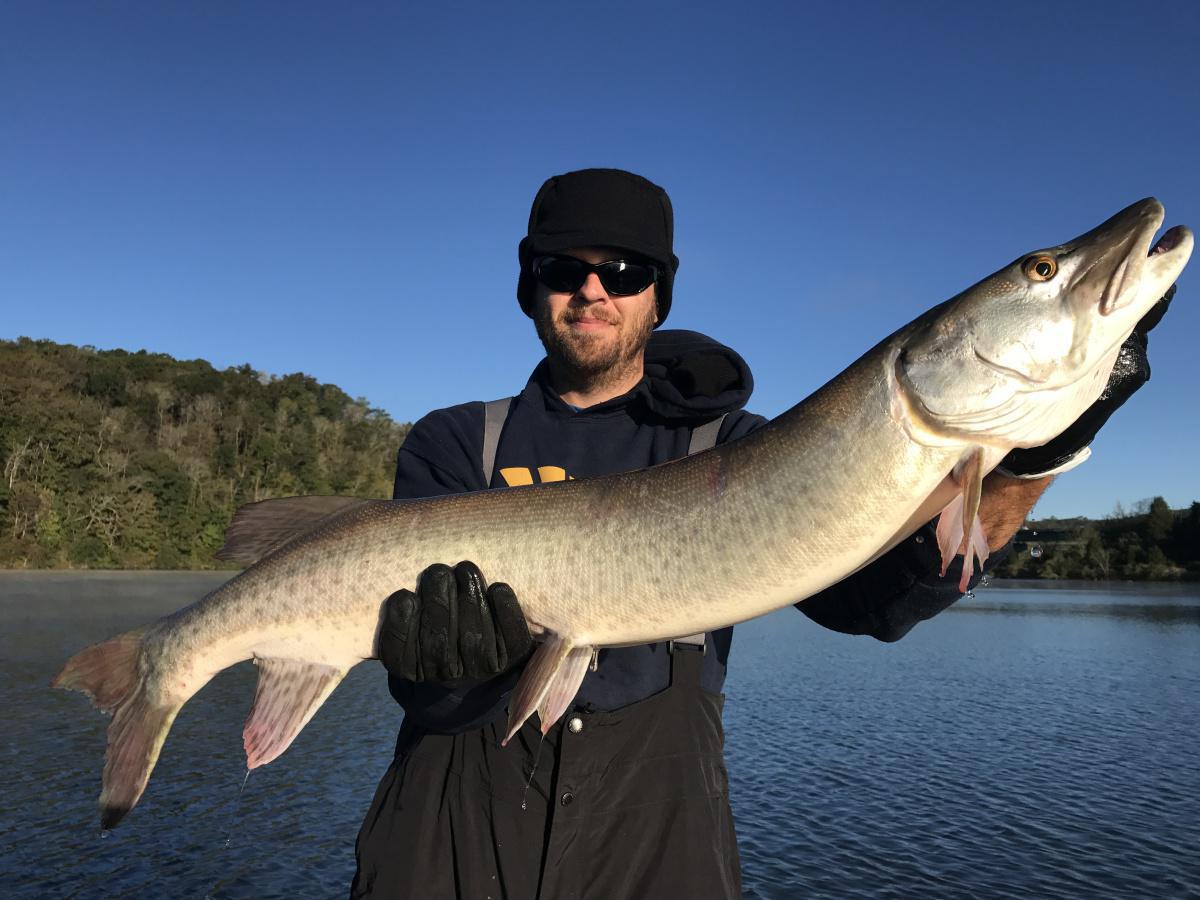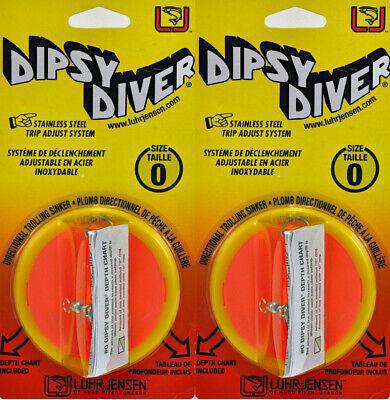The very nature of Fall is that of fluctuation and transition, shifting weather patterns are expected but can wreak havoc on our fall musky plans. Cold fronts, heavy rains, and a litany of other fall factors can slow that big bite, so it’s smart to have a backup plan in place. Keep in mind overcoming tough fall conditions isn’t always as simple as changing baits, it takes changing tactics and often a little creativity to put a musky in the net. So, let’s look at an “outside the box” trolling tactic that I turn to when fall conditions are less than stellar.
We all know or should be aware that the rule of thumb during cold fronts and poor conditions is to downsize lures and slow down retrieval speeds. Slow and deep however is a difficult feat to achieve with most smaller lures. They will simply not hit the target depths without enough trolling speed or so much line out behind the boat that it’s nearly impossible to follow breaks and contours in an effective manner.
It’s a Catch 22, our desired running depth is achieved at a speed that is in excess of what muskies desire.
After experimenting with down riggers, weights and various other contraptions, I stumbled onto a rather simple solution, the Dipsy Diver. Dipsy Divers are round vertical planer discs that attach between your lure and line. They can drive small lures to depths far deeper than their normal parameters.
My go to presentation with a Dipsy Diver is slow trolling rattle traps like the JB Rattler at depths of 10-15 feet when late fall muskies have a case of lockjaw for big lures due to less that prime conditions. Using this method to achieve depth does not require much line out, so I am able to keep the lure right on target. Tight precision boat control is often the key in the late fall period and keeping lures on a short leash with a Dipsy Diver makes this a far easier task.
Keep in mind Dipsy Divers are not made to handle large lures like Jakes or Belivers, but if properly set, they can handle small cranks like Shallow Raiders, Rattle Traps and some small swim baits. Trolling in this manner requires only that you attach the Dipsy Diver to your line and then attach a length of line or leader out to your lure. My preference is a 48” long hard mono or fluorocarbon leader between the disc and the lure. I troll using the same rods used for casting, so I utilize my 8’6” Tooth Tamer Heavy when using the Dipsy Diver. I eliminate any further hassle by attaching the Dipsy Diver to my rods casting leader which keeps the switch between casting and trolling with the diver as easy as changing a lure.
Dipsy Divers come in a few different models that achieve varying depths. For my purposes the #0 model is able to get small musky lures to desired depth.
I recommend keeping things simple when adding this presentation to your late fall fishing. I utilize this tactic frequently after making a casting pass along break lines and steep structures. Going back over the same areas I just casted with a rattle trap behind a Dipsy Diver at trolling motor speeds has yielded amazing results without the hassle of switching gears to full speed trolling. Focus on areas that you know are holding muskies, but they are acting less than corporative. I generally make these short passes with just a single rod to keep it at quick and easy affair.
An example of this method would take place after casting a steep shore break line with large crankbaits or rubber. Move to reposition the boat over the break line and make a slow trolling pass directly over the it with the Dipsy Diver and rattle trap combo.
When presenting in this manner, keep a keen eye on your electronics, making sure that you are following the contours of the shoreline, break line, and structure as often finicky muskies will be holding tight to these elements. This is a simple trick to get those small lures down deep and in front negative and neutral muskies on tough days. Just remember to keep your lures small, the speeds slow and don’t over complicate things with multi rods. Thinking outside of the box on tough days is the best way to put a Muskie in your net.
Steven Paul
Chief Editor Musky 360 / Musky Guide
www.TennesseeMuskyFishing.com







